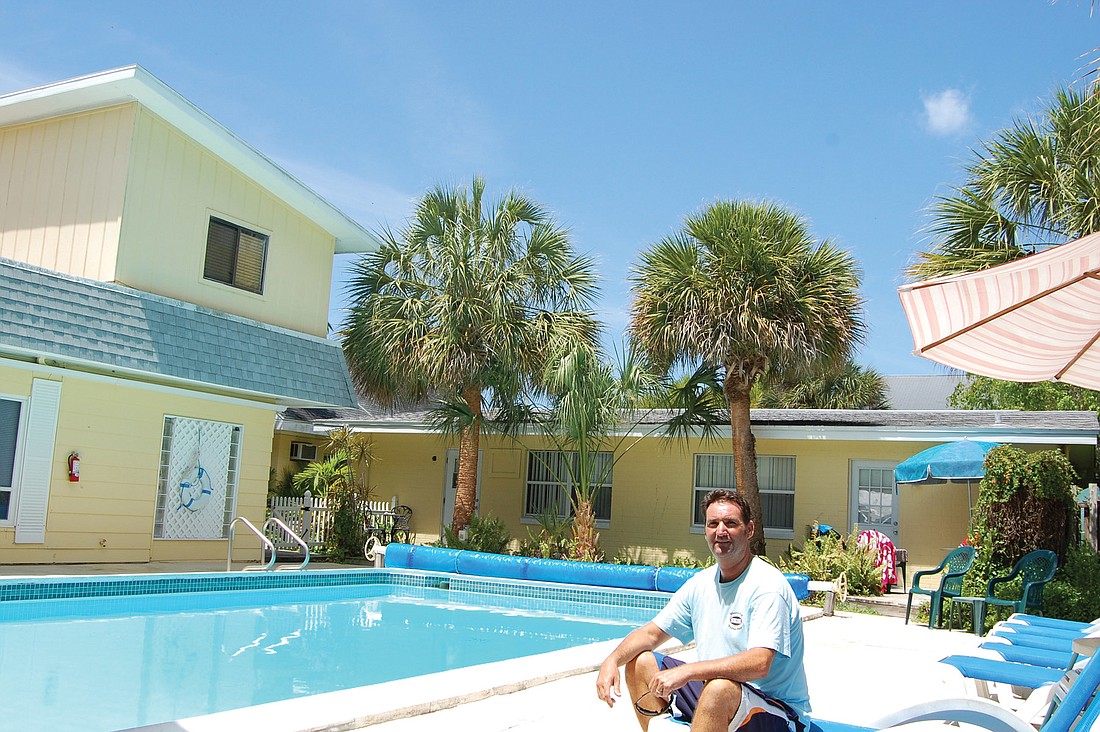- April 15, 2024
-
-
Loading

Loading

Don’t place all the blame on Europeans for the unusually heavy traffic on Siesta Key this year. Residents can point a finger at Cupid, as well.
Siesta Key merchants and hoteliers recently surveyed by the Pelican Press said they noticed an increase in marriages on Siesta this season, which brought families to enjoy the white-quartz sands of Stephen P. Leatherman’s best beach of 2011.
With fallout from the BP oil spill waning, resurgence of consumer confidence and the Dr. Beach bump, Siesta Key broke previous tourism records with nearly $800,000 in bed tax collections this March compared with about $641,000 for the same period in 2011.
In fact, the first quarter of tourist season (January through March) netted more than $2 million in tourist development taxes for the island, a number that will continue to rise as laggards’ taxes trickle in to the Sarasota County Tax Collector.
David Warren, who owns 20 rental units on the south end of Siesta with his wife, Gina, said his rental website gets 400 hits on an average day. But, when he checked his analytics the week after the No. 1 beach ranking was released, he was raking in an average of 4,000 hits.
“I was really surprised,” said the Manchester, United Kingdom, native.
The Banana Bay Club and The Banana Bay Club at Heron Lagoon, Warren’s two property sites, reached 99% occupancy this season. He noticed that approximately half of his guests had vacationed on the quartz-rich beach as children, and so nostalgia struck when they read Dr. Beach’s news.
“They may have forgotten about Siesta,” he said. “But, now, they want to give their children a chance to have the experiences they did.”
Consumer confidence was high on the north end of Siesta, too, with some merchants reporting record growth. Daiquiri Deck Raw Bar reported 8% growth in sales over the previous season, which happened to be a record year for the restaurant, said co-owner Russell Matthes.
“We’ve seen an influx of families more so than spring-breakers,” he said. “There were a lot of wedding parties and rehearsal dinners, and the No. 1 beach ranking certainly helped.”
Chris Brown, owner of the Beach Club, the Hub and the Cottage, had a similar season. Groups of 12 to 16 guests had his restaurants’ servers corralling tables more often. On weekdays, he said the line to be seated at the Cottage spilled out onto the adjacent sidewalk.
One potential reason for the uptick, said Warren, is families are taking vacations in larger groups.
“I think there were people getting out of foreclosure, so they were able to have that family reunion they had been wanting for the past years,” he said.
Europeans are returning to the Gulf Coast in greater numbers, as well.
“Typically, Europeans like to do a week in Orlando and a second week on the beach somewhere,” said Warren.
The owners of A Taste of Germany discovered the same trend after their first season as merchants in Siesta Village. Tanja Hofmann said, although she couldn’t compare it to the previous season, she felt the boom merchants are reporting.
Bring it back
The first quarter of 2012 showed a continuing trend of increased tourism compared to the previous two years.
First quarter bed tax collections
2010: 1,507,465
2011: $1,619,094
2012(p): $2,054,451
(Data provided by Sarasota County Tax Collector)
No substitutes
Demand for Siesta Key lodging seems resistant to bed-tax hikes, which have occurred four times in the last 20 years. When the county increased the tourist development tax May 1, 2007, Siesta was the only one of seven regions taxed to record an increase in collections; in fact, the barrier island’s collections offset the other areas’ losses from May 2007 to June 2007.
The tax was raised again in May 2010, and total county collections fell the following month. But Siesta’s bed taxes grew by 30% from May 2010 to June 2010. The next year, with an identical tax increase, collections grew by nearly $100,000 for the island in the same months.
This trend holds for months without tax increases as well, meaning that tourists are generally unwilling to sacrifice Siesta sands when real prices increase.
April 1, 1997 — tax rate increased to 3%
May 1, 2007 — tax rate increased to 4%
May 1, 2010 — tax rate increased to 4.5%
May 1, 2011 — tax rate increased to 5%